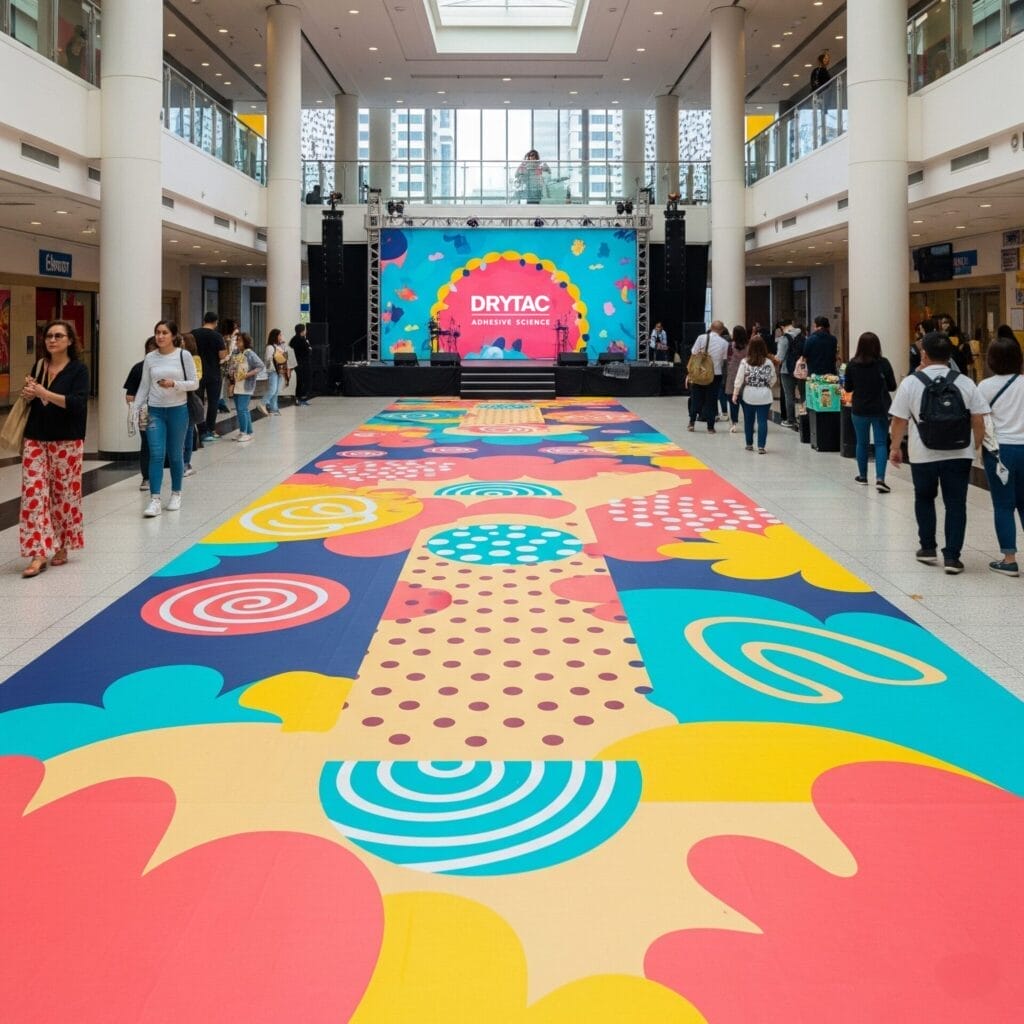Authored by Jeff Mercer Territory Sales Manager; Southeast US, at Drytac.
Floor graphics have been one of the stand-out industry growth markets during recent years. Thrown into the spotlight during the pandemic for their role in guiding people around shops and ensuring they kept a safe social distance, floor graphics have continued to evolve in the years following Covid and are now being used to create numerous eye-catching and innovative applications.
While there is little doubt as to the ongoing rise in popularity of floor graphics, it is easy to become swept up in the excitement as you rush to offer customers the opportunity to create such pieces.
Print service providers need to keep in mind that all floor graphics projects are different; not all floors are the same and, therefore, there is no such thing as a one-size-fits-all solution when it comes to choosing the type of material needed for different applications. Choosing the correct face stock and adhesive system are crucial to achieving your goals without spending extra time, and indeed money, when it is time to remove them.
Before jumping into a floor graphics project, first consider how long the piece will be in place. If it is a short-term installation that will only need to last a matter of days or weeks, consider using materials that can be both easily and cleanly removed once the piece has served its purpose. On the other hand, for long-term jobs running for months or even years, permanent adhesives hold up best to higher foot traffic.
On the subject of high traffic, certain materials are designed to withstand heavy footfall. Examples of applications where these products would be recommended include floor graphics installed at the entrance to a grocery store, with customers constantly walking over the graphics.
Next, you should think about where the application is going to be installed. Will it be placed inside a building or outside? If it is the latter, you need to select a material that can stand up to the elements such as heat, rain, humidity and sun exposure. This includes protecting the quality of printed images, which can fade when subjected to constant sunlight, and ensuring the material does not rip or tear after exposure to rain, snow and extreme temperatures.
Also look at the texture of the floor on which the graphics will be installed, as this will influence your choice of materials. Smoother surfaces include ceramic tiles, laminate and vinyl flooring, as well as hardwood. As for rough surfaces such as carpet, stone, brick and concrete, graphics installed on these types of floors may require a completely different material.
It is also important to consider slip ratings. Drytac offers a range of solutions that carry specific slip ratings, making them suitable for use in environments where floor graphics could be a hazard. Working with such materials ensures the graphics you produce do not pose a risk to those walking over them.
Linking in with this is the final point; are you better off using one-step material or slip-resistant laminate? Each offers its own advantages but again depends on the type of project that you are taking on. One-step materials do not require an overlaminate because they have a textured surface that can be directly printed to, while they are also made of a thicker material. As for slip-resistant laminates, these can be applied to most printable floor materials to provide a level of safety as well as protecting the ink from wear and tear in high traffic areas.
If you require any additional advice or guidance on material choice for floor graphics, please do not hesitate to get in touch with Drytac, as our knowledgeable team of experts will be able to assist.









